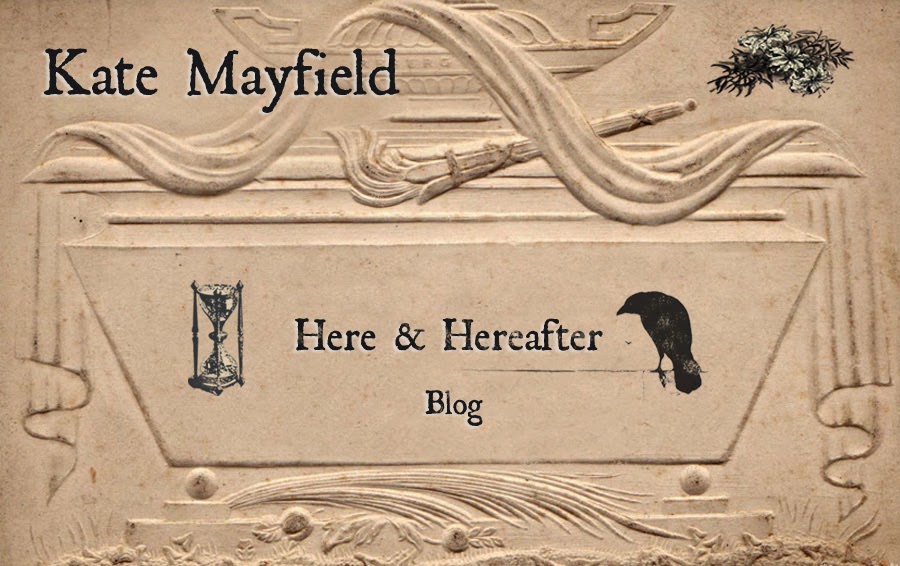

What a holy mess. I put my nose against one of the windows and it was clear why they wouldn’t let me in. I slipped away from the workers and found the front door open.

After a four-year restoration Keats House is open to the public. I continued to walk by and decided to give it a couple of weeks to avoid the first crowds. And here I am now, the only person in the entire three-story house, except for the gentle lady who took my £5.00.

Everything smells new. The paint is fresh; the Regency patterned wallpaper is clean and smooth. The colors, mostly muted, are soft and calming. In 1818 when Keats moved in, the house was only three years old and considered to be very modern. The wonder of wall-to-wall carpeting had just been introduced. I expected wood floors and Orientals throughout. Instead, I sit on a pattern of red and gold swirls in keeping with the painting that hangs above the fireplace depicting Keats sitting in this room with such a carpet underfoot. Today, the sun streams through and lands on the spot where he propped himself up by leaning over a chair while sitting in another. It appears to be an uncomfortable way to read.
Truthfully, it is Fanny Brawne’s presence that is most keenly felt in this house.

The Brawne family and Keats lived separately in this house, which at the time was two attached houses. They fell in love through their common walls. The engagement ring Keats gave Fanny is displayed in a wood and glass case alongside her soft leather needle case, a sewing box, a wide hair ribbon and delicate bracelets. Strands of Keats’s hair make up the strings in a lyre brooch. Fanny’s fashion plate book, in which she kept cuttings of fashions of the time, was not a whimsy, nor were the sewing utensils mere symbols of feminine chores. In today’s world she might have been a fashion designer.



I wander upstairs. On the landing I am astonished to see three headless mannequins draped with costumes from the movie Bright Star, Jane Campion’s brilliant movie set entirely during the period Keats lived in this house. I almost touch them; I want to very badly, but having worked in a museum at one time, I know better. Fanny’s dresses are wisps of floaty white linen, one further enhanced with a striking cherry red, short knitted jacket. Keats’s deep blue-green linen jacket and tan stirrup britches are as slender and petite as the dresses.
It’s quiet. I move to Fanny’s bedroom where the walls are covered in putty colored wallpaper in a playful design. The carpet is woven with green leafed twigs; it suggests the view from her window. The room is small like all the others, like his.
Upon entering his bedroom, on the same floor, I'm immediately drawn to the copy of his death mask; the sculpted head sits atop a stand that brings the mask to his full height – five feet, one inch. I sit on the floor next to the high tester bed mindful of the flash of the camera’s red light. No one has yet come to tell me I shouldn’t sit. They must see my pen and notebook. It’s close in this room. I feel a little claustrophobic.

I make my way down two flights to the lower level where the air is cooler. The floor is made of stone in the Brawne kitchen. A lantern hangs on the side of the fireplace. It’s sparsely furnished with the exception of one gigantic cupboard and sideboard combination.
Soon this house will be flooded with people. The film opens on November 6 and they’re expecting large numbers to flock to Keats Grove. I am told the production team thought the house too dull, the rooms too small and the setting too urbane to properly depict the setting as it was, thereby abandoning any idea of shooting here. That was before the transformation.
I wonder what Keats would make of all this. His most famous works were written in this less than spectacular house in what was then just a small village north of London. His critics were harsh and contributed to his opinion that he would most definitely die a failure. Think of that. I’ve heard a few people say that we shouldn’t use the word ‘try’, that we either do some thing, or we don’t, that there is no trying. I think we could do without the word ‘failure’, because as long as we try, we are not failing. Even after death.
I walk the Heath almost every Friday. In the heart of London, it’s still an amazingly wild, expansive piece of land where one is easily lost in its woods. But I will never walk it again without thinking of Fanny Brawne, who donned the severity of a black mourning costume when her fiancé died, and roamed the Heath frequently for over three years, her figure like a blackbird in the woods.
Years later Fanny married a Mr. Lindon. When they were of age, she confided in her three children and showed them her love letters from Keats, She made them promise to never reveal to their father that she had been previously engaged. After their parent's death, in a controversial act of profiteering, the children, led by Herbert Lindon, sold the letters at auction. It is to Fanny and her children we owe the story of Keats House.

